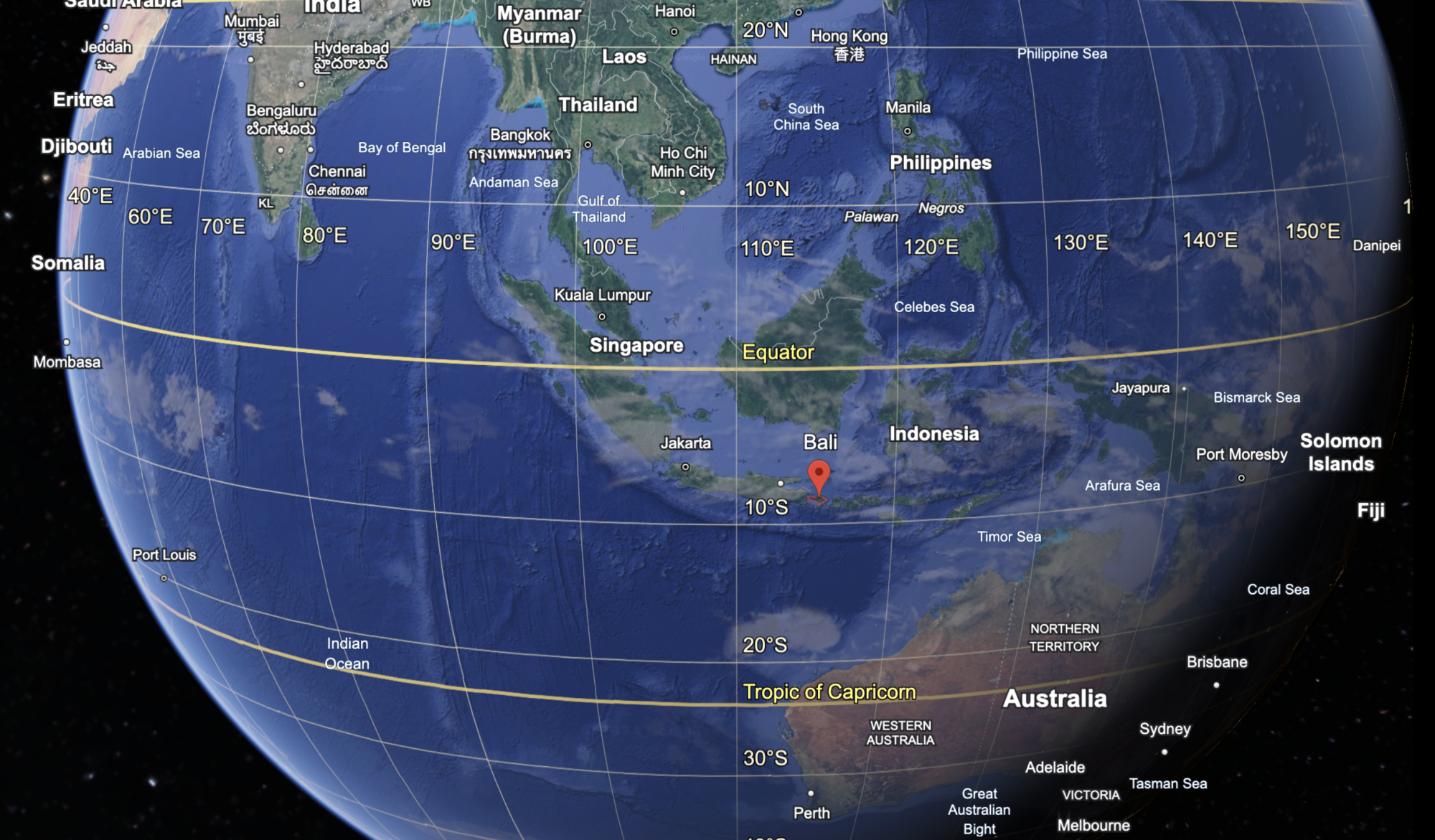Summary
FACTS ABOUT THE CLIMATE IN BALI
Located approximately 8 degrees south of the equator, Bali experiences a tropical climate characterized by warm and humid conditions year-round, punctuated by just two seasons: the rainy and the dry.
In the central regions, particularly around the mountains, the weather is notably cooler and receives higher rainfall compared to other areas, earning this part of Bali its distinct climatic identity amidst the broader tropical warmth.
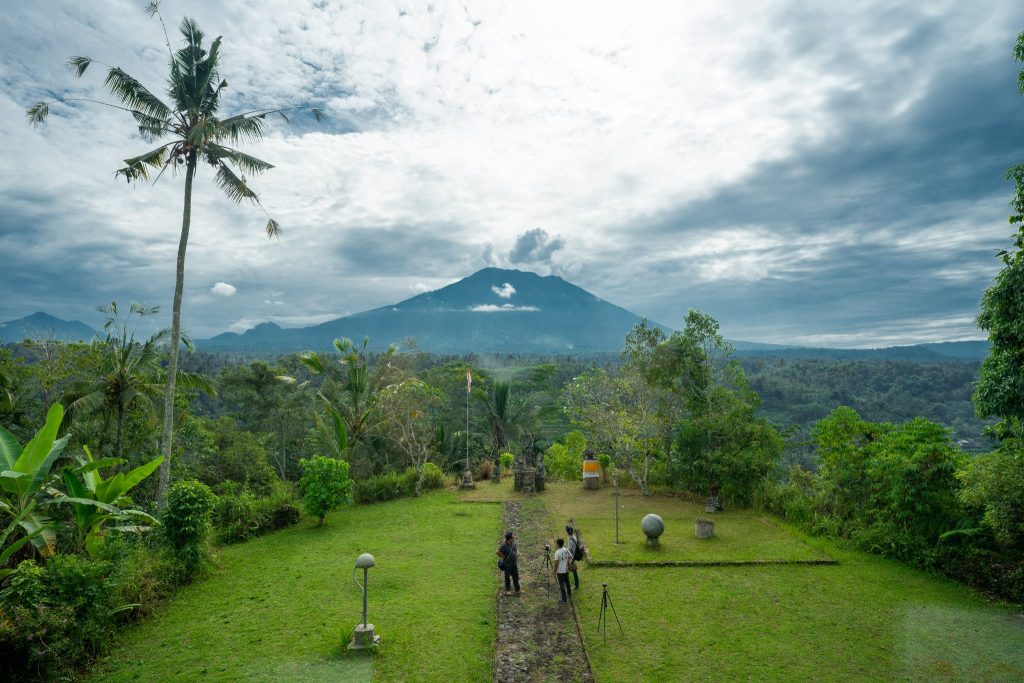
BEST TIME TO VISIT BALI
The best months to visit Bali are May, June, September, and extending into April and October. During these periods, the weather in Bali is consistently sunny and comfortably less humid than at other times of the year. This creates an ideal climate for exploring the island’s diverse landscapes and cultural sites. Additionally, these months fall outside the peak tourist season, resulting in quieter streets and less crowded beaches, which significantly enhances the overall travel experience.
Economically, visiting Bali during these off-peak times is also advantageous. Hotel room rates are generally 30%-50% cheaper than during the high season, which typically aligns with major holidays. Airfares are also lower, allowing for more budget-friendly travel. Furthermore, local shops often run promotions and offer substantial discounts, adding to the financial benefits of visiting during these months.
The reduced number of tourists during May, June, September, and the shoulder months of April and October means that visitors can enjoy a more relaxed atmosphere. This less congested environment allows for a better experience at Bali’s popular sites and attractions, such as temples, beaches, and markets. Travelers can explore at their own pace without the rush and pressure often found during the busier times.
Overall, these months provide a balanced opportunity to experience Bali’s natural beauty and cultural richness without the complications of peak season. With pleasant weather, lower costs, and fewer crowds, visitors can fully immerse themselves in what the island has to offer, making their stay both memorable and enjoyable.
The peak holiday season in Bali occurs between July and August as well as at the end and beginning of the year. During these periods, the island becomes particularly crowded with tourists coming from both international and domestic locations. This influx of visitors leads to crowded attractions, busy beaches, and generally bustling conditions throughout the island.
For those seeking a more comfortable vacation experience, the months of April, May, June, and September are highly recommended. These months are considered the low season in Bali, yet they offer pleasant weather conditions that are not marked by the rainy season. During these times, costs for accommodations such as hotels and villas are substantially lower, typically 30% to 50% cheaper than during the high season. Additionally, many shops offer promotions and discounts, and restaurants are less crowded, making for a more relaxed atmosphere. October also presents a favorable time to visit, with the onset of the rainy season still at bay.
The sea conditions during April, May, June, and September are particularly favorable for engaging in water sports and other aquatic activities. The calm and clear waters during these months are perfect for diving, surfing, snorkeling, and similar pursuits. Tourists can enjoy the natural beauty of Bali’s marine environments under ideal circumstances, without the overcrowding common in peak months.
Family-oriented tourist attractions such as Bali Zoo, Bali Bird Park, Marine & Safari Park, Waterbom Bali, and White Water Rafting spots, along with cultural sites like the Monkey Forest, are significantly less crowded outside of the peak season. This makes it easier for families to enjoy these experiences more fully, with shorter lines and less waiting, enhancing the overall enjoyment of their holiday in Bali.
BALI WEATHER AND CLIMATE
Chart of Bali’s weather patterns over the year
Before planning your vacation to Bali, it’s crucial to consult the graph right side to determine the most comfortable time for your visit. This graph provides a detailed overview of Bali’s climate conditions throughout the year, allowing you to choose a period with optimal weather. Making an informed decision based on this data ensures that your holiday experience won’t be marred by unexpected rainy weather, which can affect outdoor activities and travel plans.
By aligning your travel dates with the more favorable weather conditions, you can maximize your enjoyment and make the most of your time in this tropical paradise. This proactive approach minimizes potential disruptions and guarantees a more pleasant and fulfilling holiday experience.
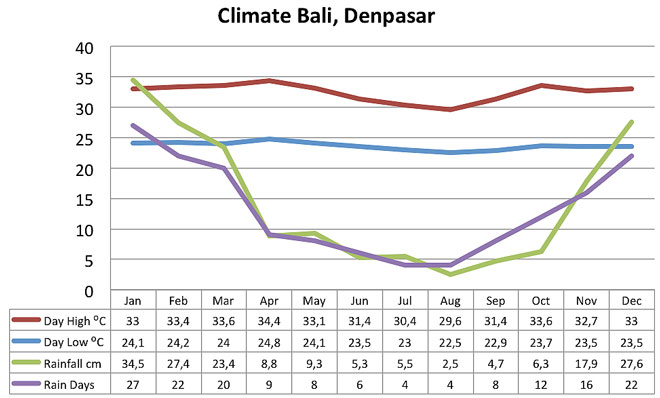
Source: https://bali.com/id/bali/cuaca/

SEASONS IN BALI

Dry season
April-October
Rain with a light breeze
Bali receives the most visits from tourists during July & August.
The temperature is fairly stable throughout the year but during the dry season, evenings can get a bit hot. During the dry season, beaches are generally clean, and Bali shows off its beautiful side perfectly.
You may still encounter some days with occasional rainfall; sometimes locals complain about how dry a week can be during the rainy season and vice versa.
Take a look at the weather graph below and the estimated number of days with rainfall etc in Denpasar (south of Bali near Kuta, Seminyak, etc).
If you have a choice of time to go on vacation, it’s better to avoid the rainy season months. This is of course to minimize the risk of a bad holiday experience due to bad weather.
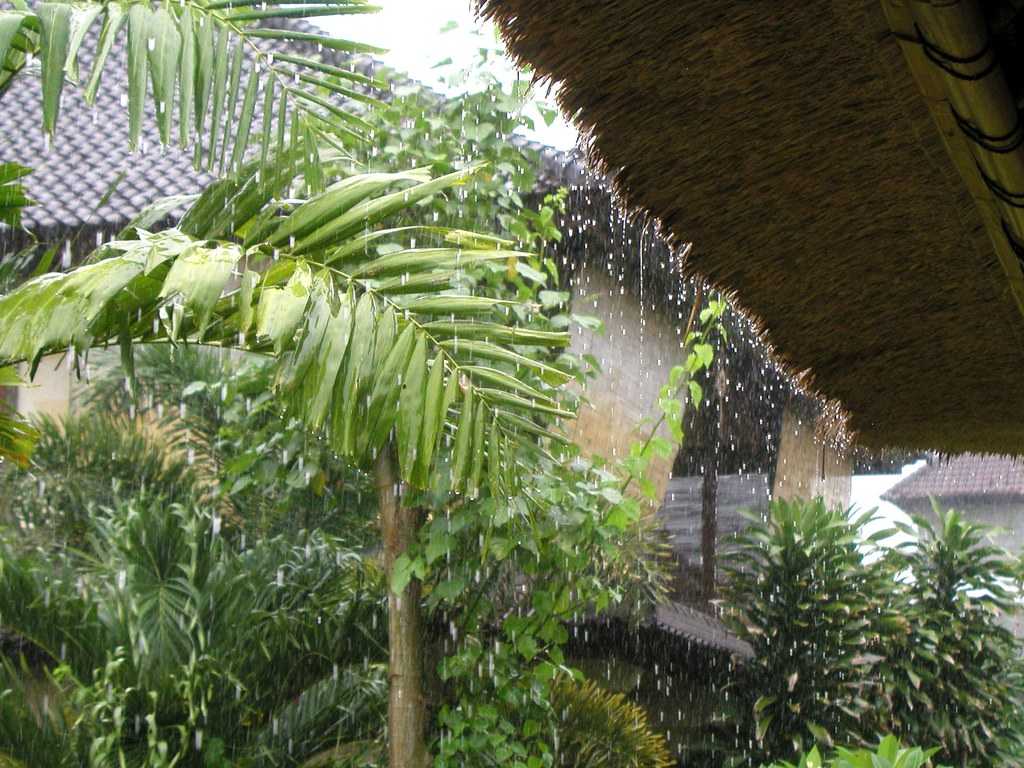
Rainy season
November – March
Rain and Heat
During Bali’s rainy season, the island exudes a calmer and more serene atmosphere, although the coastal conditions can sometimes deteriorate. In the south—areas like Kuta, Legian, and Seminyak—the beaches can accumulate debris and rubbish washed ashore in January and February. This issue has shown signs of improvement over the years, but it remains influenced by the sea’s pollution levels and the direction of wind currents, leading to occasional accumulations of trash on several beaches.
The weather during the rainy season features stronger winds and water currents, and although heavy rain is common, it often lasts only for a short duration, quickly giving way to sunshine. It frequently rains at night while days generally remain sunny, and extended periods of continuous rain are rare. However, recent years have brought some unpredictability, with months like November experiencing unexpectedly high temperatures and sudden changes in weather patterns, adding a layer of unpredictability to the season.

RAINFALL IN BALI
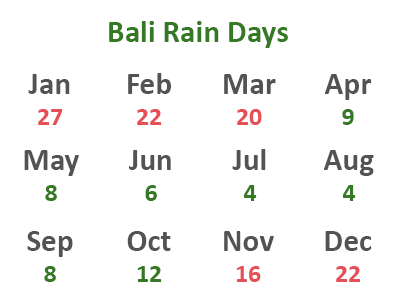
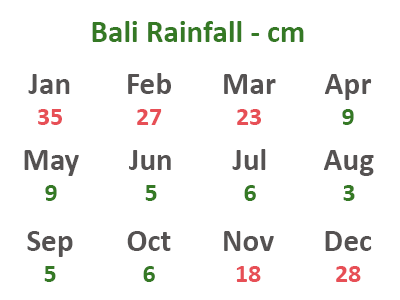
WEATHER CONDITIONS IN OCTOBER AND NOVEMBER
| WEATHER DETAILS OCTOBER | |||||||
|---|---|---|---|---|---|---|---|
| Months | max. Temp. | Rain days | Rainfall | Season | |||
| Bali weather October | 33°C | 91.4°F | 12 | 6 cm | Dry Season | ||
How is the weather in October?
As Bali transitions from the dry season in September, October begins to feel more like the rainy season, albeit with somewhat unpredictable weather patterns. Typically, October experiences rainfall on about 12 days, though the precipitation is usually light. Despite this, October continues to be an excellent time to visit Bali, thanks to a variety of enjoyable activities that are available beyond the beaches. The island remains less crowded, providing a more peaceful atmosphere, and accommodation prices drop significantly, making it a cost-effective period for travel. Moreover, some international festivals may still be taking place, adding to the cultural appeal of visiting during this quieter month.
| WEATHER DETAILS NOVEMBER | |||||||
|---|---|---|---|---|---|---|---|
| Months | max. Temp. | Rain days | Rainfall | Season | |||
| Bali weather November | 32°C | 89.6°F | 16 | 18 cm | Rain Season | ||
How is the weather in November?
During Bali’s rainy season, the island enters a quieter phase with a noticeable slowdown in activities; treks to volcanoes are suspended due to the weather, yet sunny days still permit beach outings and surfing. This period attracts visitors seeking tranquility, as accommodation rates drop significantly and restaurants and shops offer appealing promotions. Ideal for relaxation, the season is perfect for indulging in gourmet dining, reading, and spending time in coffee shops to engage with locals and explore Balinese culture. Despite the overall calm, Bali’s vibrant nightlife continues with lively parties and clubbing, maintaining a dynamic atmosphere even in the wetter months.
Source: https://bali.com/id/bali/cuaca/

